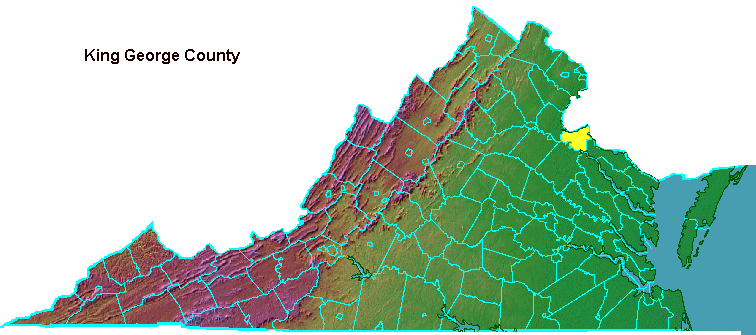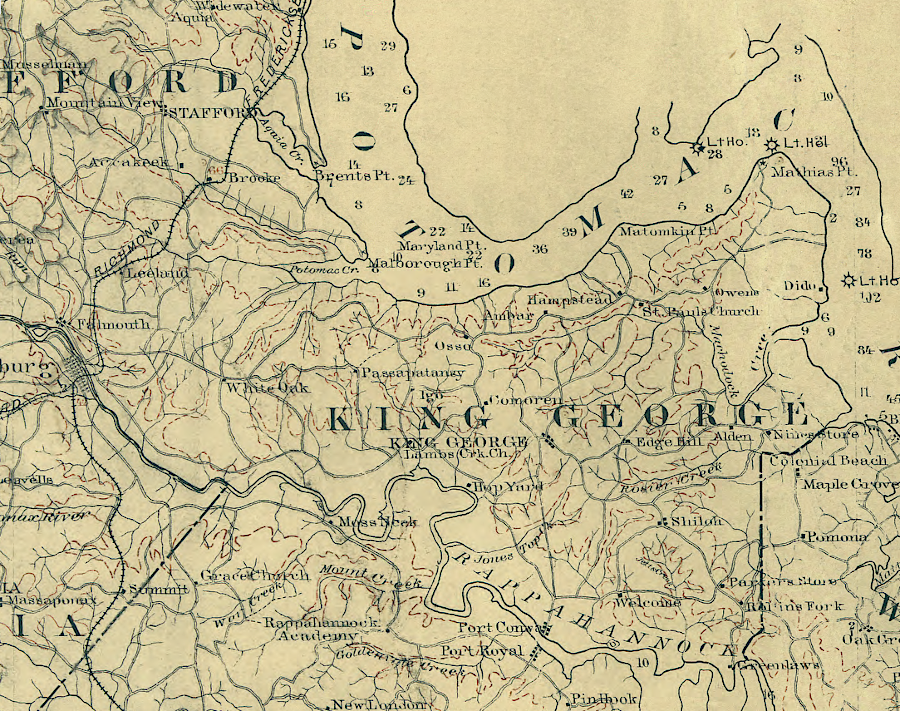

King George County was formed in 1720. King George had been invited to become King of England by Parliament, in order to block the Catholic son of former King James II from gaining the throne.
King George was the great-grandson of King James I, for whom Jamestown was named. The Act of Settlement passed by Parliament in 1700 was designed so James I's granddaughter, Sophia, would become queen of England after Queen Anne's death. However, Sophia (who had married the Elector of Hanover) died two months before Queen Anne. It was her son who became King George I of England as well as ruler of Hanover.
King George I was 54 years old when he became King of England, and had lived the whole time in Hanover. He brought no Queen to England from Hanover - he had divorced his wife (also named Sophia) after her affair with a military officer became too public. The officer disappeared without a trace, and Sophia was locked in a castle for the last 32 years of her life. The future Prince of Wales never saw his mother again, which may explain some of the hostility between him and his father. George I brought mistresses, of course. They added a taste of spice to the royal court that was missing during the rule of Queen Anne.
Many Virginia place names are based on the Hanover line of royalty. King George's grandmother Elizabeth (for whom the Elizabeth River was named) was the daughter of James I (of King James Bible fame) and the sister of Charles I. She married Frederick V, the "Elector of Palatine." Frederick was the ruler of a small German state that, historically, was entitled to vote for the ruler of the Holy Roman Empire.
Frederick V's claim to the kingdom of Bohemia in 1621 stimulated another round of European wars, which forced him into exile. A century later, Governor Spotswood was active in recruiting Palatinate refugees to create the settlement of Germanna.

King George County in 1894
Source: Library of Congress, Map of northern Virginia (1894)